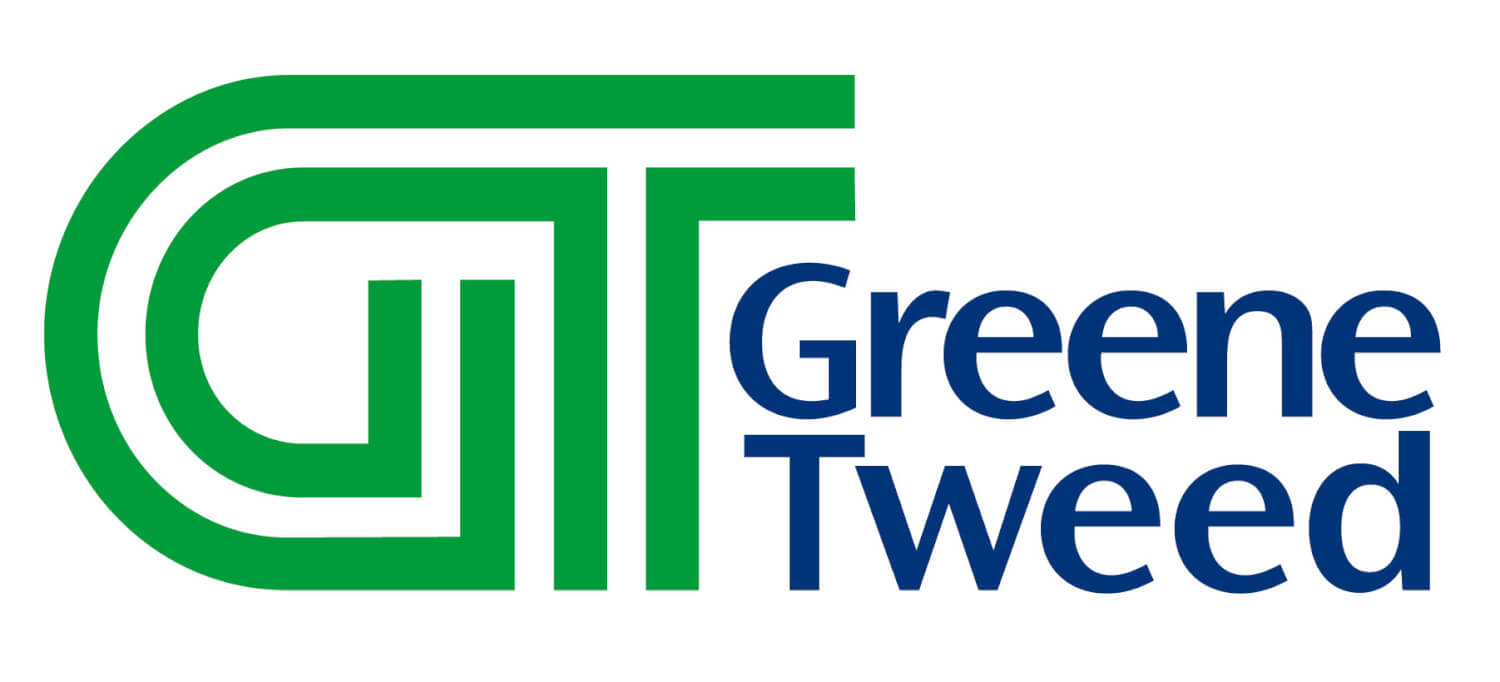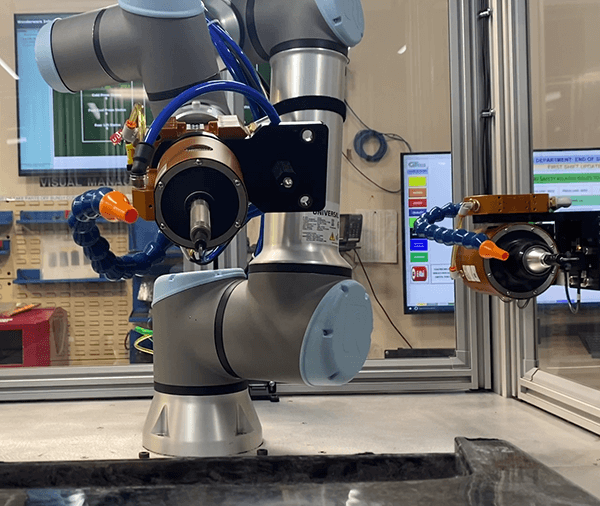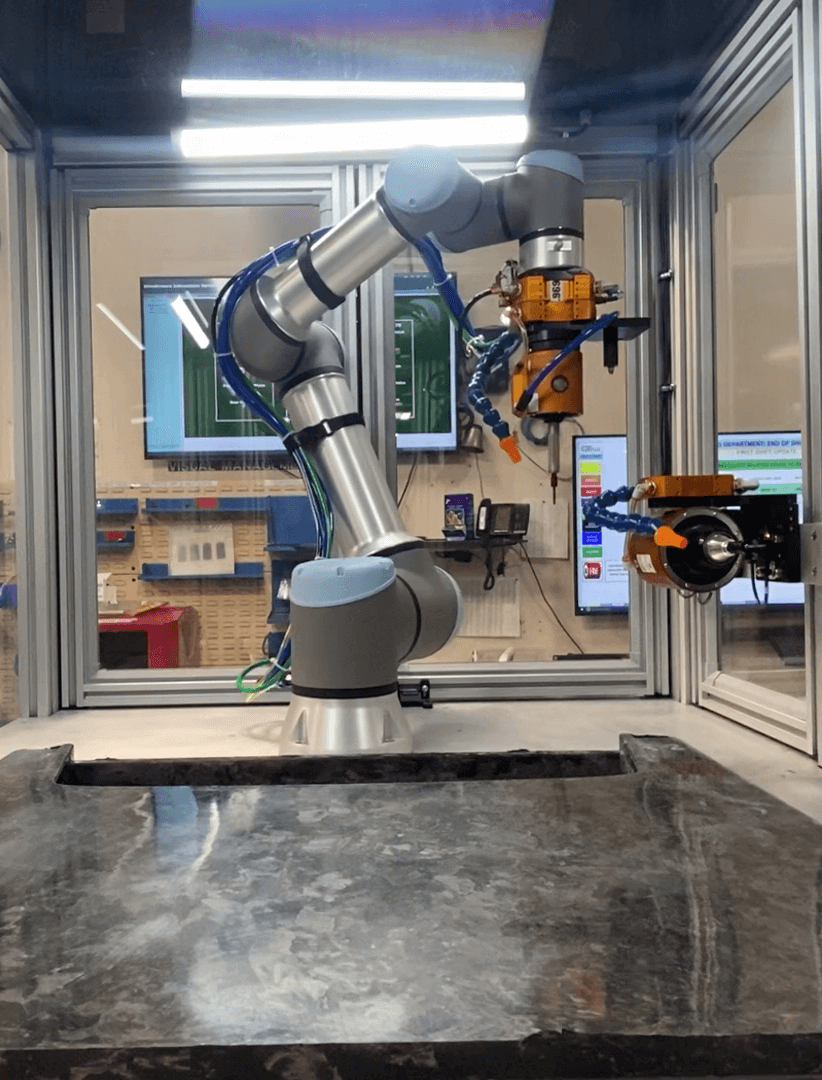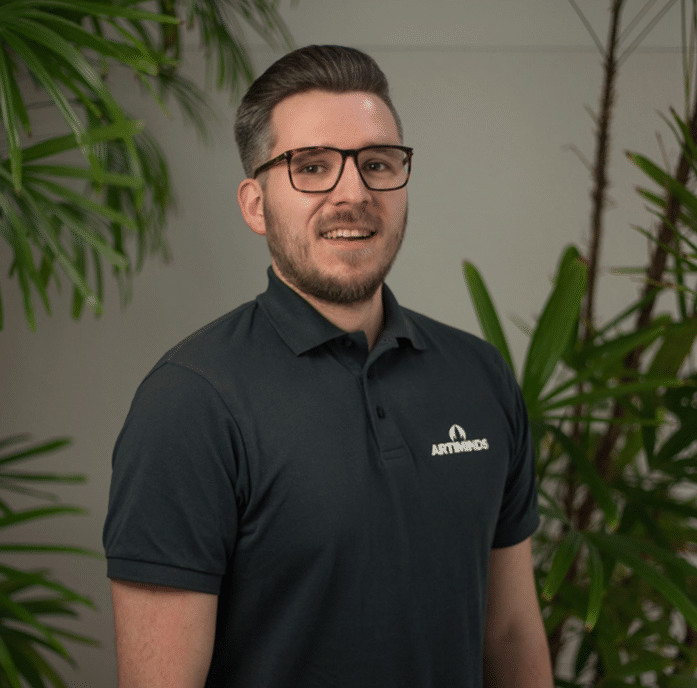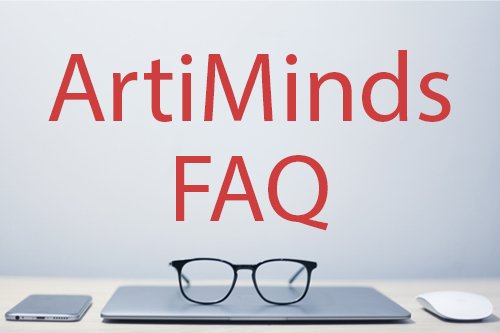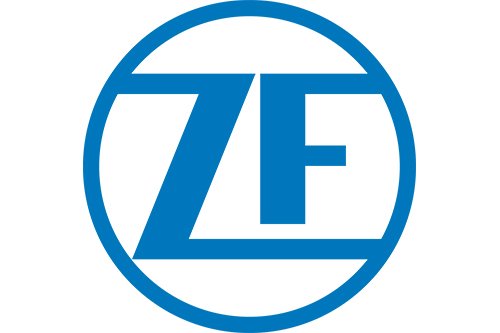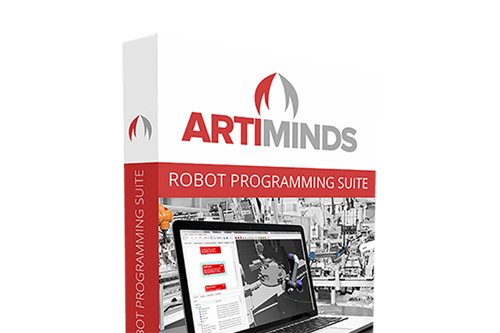Flexible robotic deburring cell for surface processing of varying, complex components
GREENE TWEED, USA
THE CHALLENGE
The american company Greene Tweed produces a wide range of engineered thermoplastic and composite components in relatively small batches and value solutions that are adaptable. Due to the large number of variants, it is important that the automation solutions used can be flexibly adapted and that different surface processing tasks can be carried out. Because of that reason the engineering team of Greene Tweed decided to design, install, and program a new robotic cell that can perform a variety of material removal tasks.
Greene Tweed’s Xycomp® is an extremely durable and lightweight thermoplastic composite material. It can be molded into a variety of complex shapes, which makes it a desirable replacement for metal in aerospace and similar applications. While the durability and moldability of Xycomp® makes it an ideal fit for the target market, this combination also creates geometrically complex flash lines that are difficult to remove consistently.
THE APPLICATION
WHY ARTIMINDS
“It was a two-way-street partnership with ArtiMinds. That made it possible for us to realize such a complex robot application.”
ANDREW LAICH
Engineering Supervisor at Greene Tweed
WATCH CASE STORY VIDEO:
THE SOLUTION
To implement the deburring application for their geometrically complex parts, Greene Tweed used ArtiMinds RPS robot programming software. The intuitive software, ArtiMinds RPS, gives the user an open platform to easily design and implement new robot programs. With it, users can prepare programs offline, set up the communication between off-the-shelf automation equipment, integrate logical conditions, and validate programs through simulations before they are transferred on the real system. The coaching and support ArtiMinds provided Greene Tweed shortened their development timeline and gave them a software framework to grow into.
Andrew Laich shared that, “Artiminds RPS allowed us to easily create complex motion paths that could be used between multiple material removal tools, as well as simplifying the communication between the robot and PLC, and HMI to cycle through different tooling in the cell. In my experience there is no comparable software solution available in the market.”
Once deployed, the updated robotic material removal cell more than halved the overall processing time for Greene Tweed’s parts and eliminated all but the most minor post-process finishing by hand. Thanks to the close and successful collaboration, Greene Tweed was able to significantly reduce their timeline to develop and deploy a fully automated deburring cell. Choosing the right partners enabled the Greene Tweed team to build a program for their cell that meets their needs exactly.
„Our integration team is now able to apply what they´ve learned to cobot-driven manufacturing solutions in the future. That´s enabling us to act even more innovatively and flexibly.
In my experience there is no comparable software solution available in the market.”Andrew Laich, Engineering Supervisor at Greene Tweed
Take Aways of the deburring application:
- ArtiMinds RPS simplifies path planning for complex components: With the CAD2Path feature, robot paths can be generated more accurately and automatically based on CAD models of the parts.
- Intensive consulting and support during planning and implementation of the deburring cell by the ArtiMinds engineering team.
- ArtiMinds RPS simplifies communication between the robot, PLC and HMI.
- Robot cell can be easily adapted for further new processes: ArtiMinds RPS minimizes programming effort and simplifies changing paths and parameters.
- Independent and flexible implementation: the software allowed Greene Tweed to develop the robotic deburring cell independently and they can apply the know-how gained to future robotic manufacturing solutions.
GET STARTED AND LEARN MORE IN A FREE ONLINE DEMO
In just a few minutes, we will show you how to plan, program, operate, analyze and optimize robot applications cost-efficiently, intuitively and easily with ArtiMinds RPS.
The non-binding free online demo is the perfect way to get a first impression of the software, the application portfolio and if it suits your needs.
Link to: FAQ
We answer the most important questions about the ArtiMinds software solutions, applications and the company in our FAQ section.
Link to: ZF Friedrichshafen
Program and simulate robot applications independent of manufacturers, reduce maintenance costs and alleviate the lack of skilled workforces. Find out how ZF succeeds thanks to ArtiMinds!
MUCH MORE THAN JUST SIMPLE ROBOT PROGRAMMING: With RPS you create cross-process standardization – from planning and programming to maintenance.

